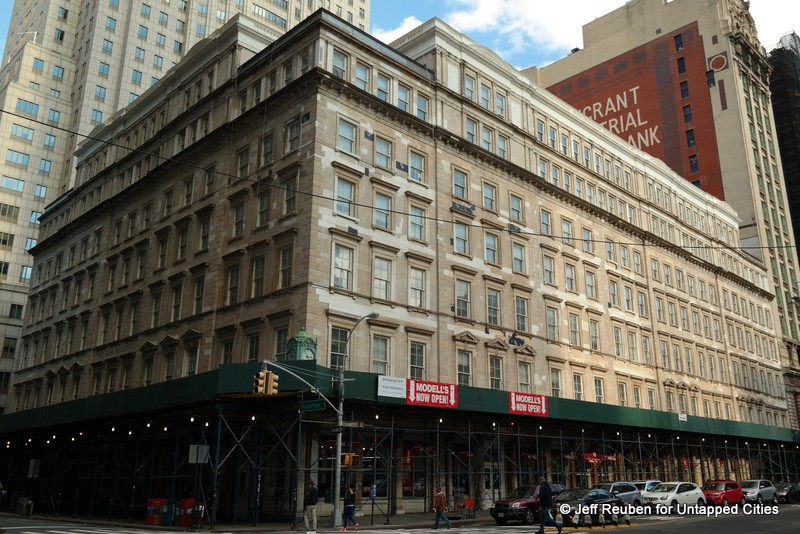4. 280 Broadway is A Survivor

The survival of 280 Broadway was more a matter of happenstance than intention. Over the course of the 20th century, it was saved by cheaper real estate, wars, death, municipal inertia, fiscal crisis, and, finally, by landmark protection.
During the early 1900s, 280 Broadway was considered as a site for either a new municipal building or a new courthouse, but less expensive sites were selected for those projects. When New York Sun owner Frank A. Munsey bought the building in 1917, he planned to replace it with a skyscraper but soon dropped those plans due to high building costs related to World War I. Reports that Munsey was reviving plans for a new building surfaced a few years later but before he could act on them he died in 1925. In 1951 a new building owner announced plans for a 40-story tower on the site. But, 280 Broadway was saved again by war. With high steel prices due to the Korean War, the old building was upgraded instead and then sold in 1952.
In 1960s, the City once again looked to redevelop 280 Broadway. As part of a comprehensive Civic Center proposal by architect Edward Durell Stone, the City unveiled plans for a 54-story municipal building to replace 280 Broadway and neighboring buildings. Sporting goods executive Henry Modell, who had a store and his executive offices in 280 Broadway (following in the footsteps of Stewart and Woolworth) was a leading opponent of the new building proposal.
The Civic Center plan was approved and the City acquired the property, but the project stalled. As an interim measure, 280 Broadway housed municipal offices. A City official stated in April, 1975 that the plan for a new building was “not legally dead but not awakened from its slumbers” and in the meantime the City had no plans to either renovate or demolish the structure. But, with the City teetering on the precipice of bankruptcy later that year, the ambitious Civic Center plan was dead for good.
The preservation of 280 Broadway was only assured when this uniquely historic building was designated a New York City Landmark in 1986.





